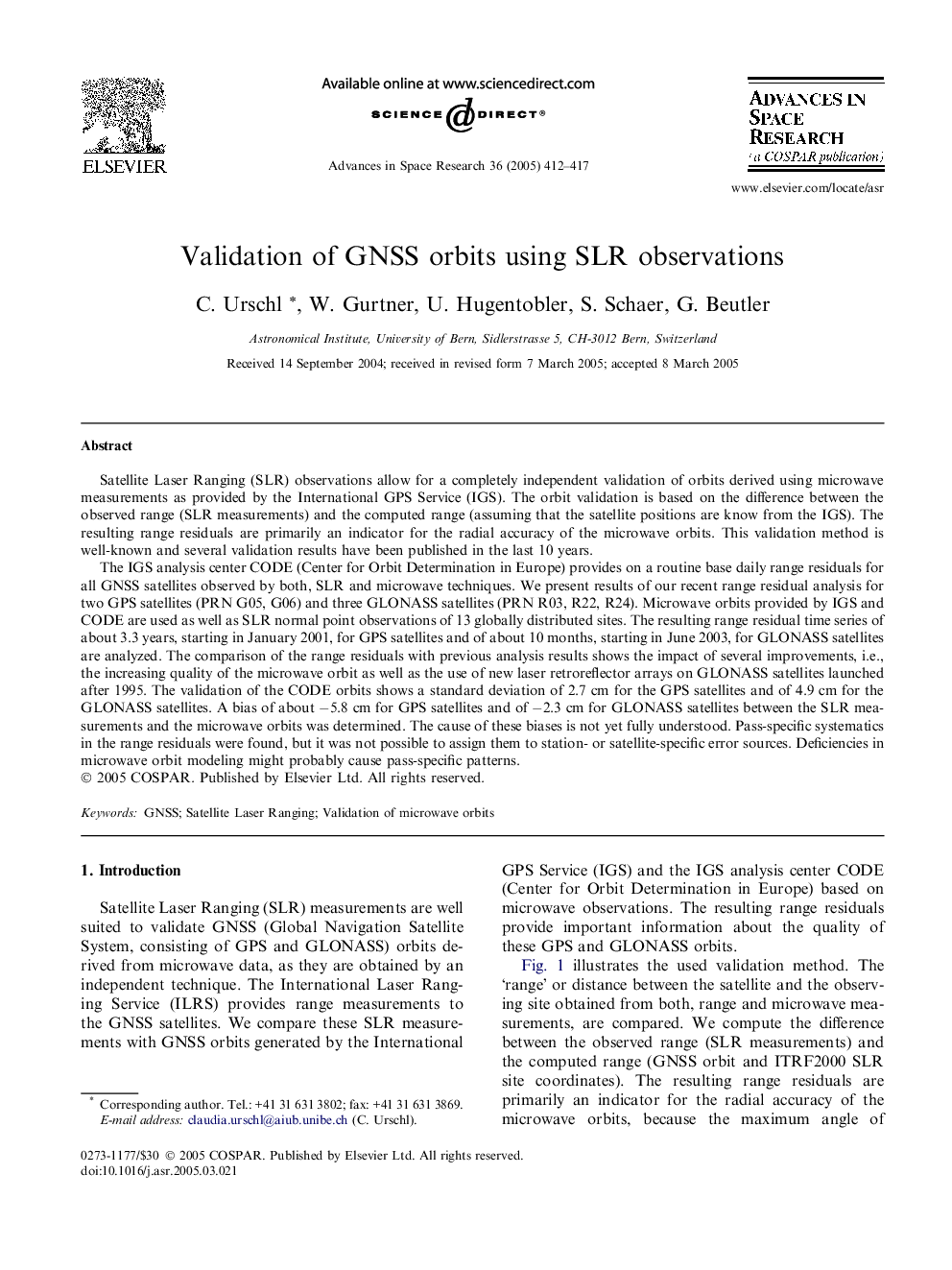| Article ID | Journal | Published Year | Pages | File Type |
|---|---|---|---|---|
| 10696620 | Advances in Space Research | 2005 | 6 Pages |
Abstract
The IGS analysis center CODE (Center for Orbit Determination in Europe) provides on a routine base daily range residuals for all GNSS satellites observed by both, SLR and microwave techniques. We present results of our recent range residual analysis for two GPS satellites (PRN G05, G06) and three GLONASS satellites (PRN R03, R22, R24). Microwave orbits provided by IGS and CODE are used as well as SLR normal point observations of 13 globally distributed sites. The resulting range residual time series of about 3.3 years, starting in January 2001, for GPS satellites and of about 10 months, starting in June 2003, for GLONASS satellites are analyzed. The comparison of the range residuals with previous analysis results shows the impact of several improvements, i.e., the increasing quality of the microwave orbit as well as the use of new laser retroreflector arrays on GLONASS satellites launched after 1995. The validation of the CODE orbits shows a standard deviation of 2.7 cm for the GPS satellites and of 4.9 cm for the GLONASS satellites. A bias of about â5.8 cm for GPS satellites and of â2.3 cm for GLONASS satellites between the SLR measurements and the microwave orbits was determined. The cause of these biases is not yet fully understood. Pass-specific systematics in the range residuals were found, but it was not possible to assign them to station- or satellite-specific error sources. Deficiencies in microwave orbit modeling might probably cause pass-specific patterns.
Keywords
Related Topics
Physical Sciences and Engineering
Earth and Planetary Sciences
Space and Planetary Science
Authors
C. Urschl, W. Gurtner, U. Hugentobler, S. Schaer, G. Beutler,
